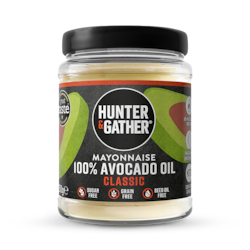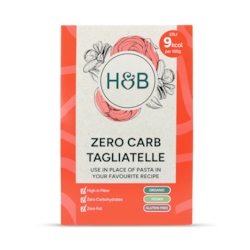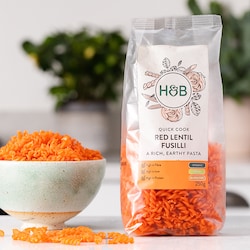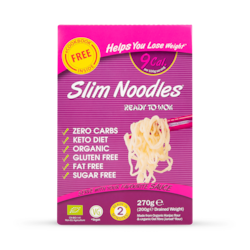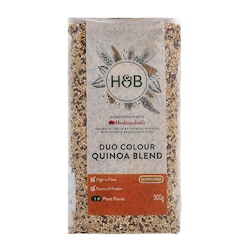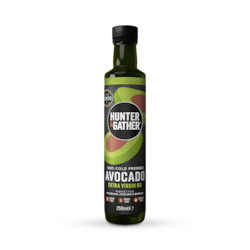20% off £30
8 gluten-free foods

Summary
1What exactly is gluten?
Gluten is the name given to the combination of two proteins, glutenin and gliadin, that are found in grains like wheat, rye, and barley...
2What is a gluten intolerance?
Also known as non-coeliac gluten sensitivity, a gluten intolerance can leave you feeling bloated, gassy, or tired after eating gluten.
3What is Coeliac disease?
Coeliac disease is an autoimmune disorder, with at least 1 in 100 people thought to be affected.5 With coeliac disease, the immune system treats...
Have you recently been diagnosed with a gluten sensitivity or coeliac disease? Or are you trying to isolate a food intolerance, and think gluten might be the culprit? Cutting out gluten from your diet might feel daunting, but luckily there are many delicious foods that are naturally gluten-free that you can enjoy.
From fruits and vegetables to meat and dairy, here we’ll give you the low down on naturally gluten-free foods that you can add to your diet.
What exactly is gluten?
Gluten is the name given to the combination of two proteins, glutenin and gliadin, that are found in grains like wheat, rye, and barley.1 Gluten can also be found in other foods too though, and sometimes where you least expect it.
When mixed with warm liquid, gluten reacts with yeast to form gas pockets which, when baked in a hot oven, expand to create the chewy texture in foods like bread that we all love. It acts almost like glue to hold foods together and adds an elastic quality, giving foods like bread a doughy consistency.
The protein, gliadin, is thought to make up around 70% of the protein in gluten and it’s this that experts believe is to blame for the health issues associated with eating gluten, like coeliac disease.2
What is a gluten intolerance?
What is Coeliac disease?
Coeliac disease is an autoimmune disorder, with at least 1 in 100 people thought to be affected.5 With coeliac disease, the immune system treats gluten as an invader, and in the process of trying to ‘fight’ gluten, attacks healthy tissues inside the gut.6
Symptoms include short-term gastrointestinal problems such as constipation and indigestion after eating gluten, and more serious longer-term issues like malnutrition and weight loss, because of not being able to absorb nutrients properly.7
As with any allergy, those with coeliac disease must completely avoid all traces of gluten. Even crumb cross-contamination from using the same toaster as someone who makes non-gluten-free toast can cause symptoms for coeliacs.8
8 gluten-free foods
Whilst a gluten-free diet might sound restrictive, many foods are actually gluten-free in their natural form.9 Where you need to be careful is when manufacturers and chefs add gluten to previously gluten-free foods for texture or flavour.10
So, if you’re new to a gluten-free diet, you might be thinking what is gluten-free? Here are 8 gluten-free foods that you can enjoy as part of a gluten-free diet.
- Fresh meat: Fresh meat that hasn’t been processed is free from gluten but be weary of breadcrumbed or battered products as these will likely contain gluten.9
Even products like meatballs, faggots and haggis or meat products in a sauce could contain gluten, so be sure to check the label and read the ingredients thoroughly.11 - Fresh fish: Like fresh meat, many fresh fish products are gluten-free.10 Usually, fresh, dried, and smoked fish, as well as shellfish, don’t contain gluten, but again be weary of anything in a crumb, batter, or sauce as these could contain gluten.
- Eggs: Eggs are a kitchen staple and luckily, they’re gluten-free!10 The perfect base for a great gluten-free breakfast, eggs can make up a hearty dish that’s fit for any gluten-free requirement.
- Fresh fruit: Most fruits are naturally gluten-free, like citrus fruits, bananas, apples, berries, peaches, and pears, and they make great gluten-free snacks.12
But be wary of some dried, canned, frozen, and pre-chopped fruit though as these can sometimes contain or come into contact with gluten.
If the product is processed in any way like canned or frozen, you will need to check the label as certain additives, such as thickeners, do often contain gluten, and you’ll want to make sure it’s been prepared in a gluten-free area, especially if you are a coeliac.14 Pure fruit juice is gluten-free, but smoothies can contain traces of gluten-containing grains. Fruit squashes such as barley water are also not suitable for a gluten-free diet.13 - Fresh vegetables: Like fruit, most vegetables are naturally gluten-free, and some, like broad beans, are a great source of gluten-free fibre! Veggies like cauliflower, broccoli, spinach, kale, potatoes, corn, carrots, mushrooms, and onions are all considered gluten-free and make a nutritious addition to so many meals. Again, be wary of any prepared vegetables as these could contain traces of gluten.14 Make sure you check the label for certain ingredients and additives that contain gluten.
- Milk and cheese: Most milk and cheese products are gluten-free in their natural form.15 Processed cheese, flavoured ice cream, malted milkshakes, and some flavoured yoghurts (such as those which contain cereals) can contain gluten, so it’s always important to check the label before you add them to your shopping basket.16
- Some wholegrains: Rice, quinoa, buckwheat, and amaranth are all gluten-free grains. Corn is also gluten-free. Corn and maize flours are excellent for use in baked goods to replace wheat flour.17
Rice or soba noodles are a good substitute for regular noodles, and pasta made from brown rice flour, chickpea flour or quinoa is delicious with your favourite gluten-free sauces.19 If you are coeliac or have a high sensitivity to gluten, you should only choose grains which are labelled ‘gluten-free’, as you can be sure they have been made in a facility where there is no cross-contamination with gluten-containing grains. - Oats: Oats are naturally gluten-free but are often processed in factories which also produce other cereals which do contain gluten.18 For this reason, coeliacs should always choose oats labelled as gluten-free.
Foods that contain gluten
Gluten can be found in most wheat products, as well as in barley and rye. Gluten-rich foods to avoid include pasta, most bread, flour, cakes, couscous, breakfast cereals, biscuits, pizza, beer, ready meals, and processed soups. There are also several lesser-known grains which also contain gluten, like einkorn, pearl barley, spelt and more.
However, the gluten-free market is growing rapidly, with a 43% increase from 2015 to 2020 which means there has been a huge rise in products such as pasta, bread and cereals that are manufactured specifically to not contain gluten.19
So, there’s more freedom of choice to create delicious gluten-free meals than ever before!
The bottom line
1. https://www.hsph.harvard.edu/nutritionsource/gluten/
2. https://www.sciencedirect.com/topics/biochemistry-genetics-and-molecular-biology/gliadin
3. https://my.clevelandclinic.org/health/diseases/21622-gluten-intolerance
5. https://www.nhs.uk/conditions/coeliac-disease/
6. https://www.coeliac.org.uk/information-and-support/coeliac-disease/about-coeliac-disease/
7. https://www.nhs.uk/conditions/coeliac-disease/symptoms/
8. https://www.coeliac.org.au/s/the-gluten-free-diet/cross-contamination
9. https://www.coeliac.org.uk/information-and-support/living-gluten-free/the-gluten-free-diet/
10. https://www.hopkinsmedicine.org/health/wellness-and-prevention/what-is-gluten-and-what-does-it-do
11. https://www.beyondceliac.org/gluten-free-diet/is-it-gluten-free/meat/
12. https://wakegastro.com/patient-info/patient-education/celiac-disease/
13. https://www.coeliac.org.uk/frequently-asked-questions/2014fddfaq-naturally-gf-foods/
14. https://www.ncbi.nlm.nih.gov/pmc/articles/PMC5439366/
15. https://celiac.org/gluten-free-living/gluten-free-foods/
16. https://nationalceliac.org/celiac-disease-resources/confusing-gluten-free-diet-ingredients/
17. https://www.nhs.uk/conditions/coeliac-disease/treatment/
18. https://www.beyondceliac.org/gluten-free-diet/is-it-gluten-free/milk/
21. https://ahdb.org.uk/news/consumer-insight-free-from-moves-mainstream-2



